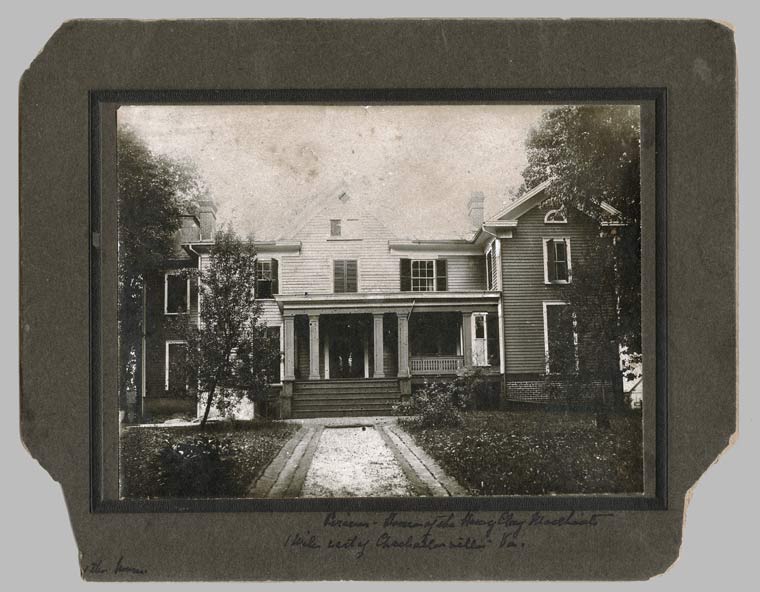exigencies of war

Marchant family home, known as "Piraeus." Photo taken circa 1908, courtesy of the Marchant Family collection.
The house was built around 1840 and remains remarkably unchanged to this day. For many years, this was the largest house in Charlottesville.
In the photo, one can see the pair of lovely brick gutters that come from the house and traverse nearly the entire length of the front yard.
There is strong evidence that a tunnel runs under the gravel path shown between the gutters. The tunnel begins in the basement, under the front steps, and exits somewhere on the other side of the railroad tracks.
Inexplicably, in 1980, Albemarle County zoned this, and the other historic homes on the hilltop, Light Industrial. Since then, these properties have been under threat of demolition to make way for industrial development.
We'd welcome hearing from anyone interested in Piraeus, or who would like to join us in saving it from demolition. Victoria Dunham - Woolen Mills Road
Meanwhile, in the decade of the fifties, as Marchant strived to bolster the financial condition of the company, the nation had moved steadily to the brink of war, When the blow fell in 1861, the small corporation was swept along by the exigencies of the conflict. The Confederate government hastily commandeered or seized control over the multitude of small textile factories throughout the South and put them to work producing military cloths. The Charlottesville Manufacturing Company played its part in this phase of the Confederate war effort. By 1862, fifteen persons labored at spinning and weaving cotton and wool fibers into goods for soldiers' and laborers' wear. If an adequate wool supply had been available the mill might have experienced a boom similar to that in the northern wool factories. At least one other small wool factory sprang up nearby to meet the war-induced demand for cloth, making three such mills within a radius of some thirty miles. The Marchant factory alone had orders enough to give work to three times the number of people actually employed, but difficulties in transporting cotton and wool from the abundant supplies in Texas and the Lower South precluded undue expansion of the enterprise. The shortage of wool grew especially serious as the war progressed, and throughout the South private homes were frequently stripped of all available fabrics to meet the needs of the army. --Harry Poindexter
Labels: architecture, Civil War, Henry Clay Marchant, Poindexter History

0 Comments:
Post a Comment
<< Home